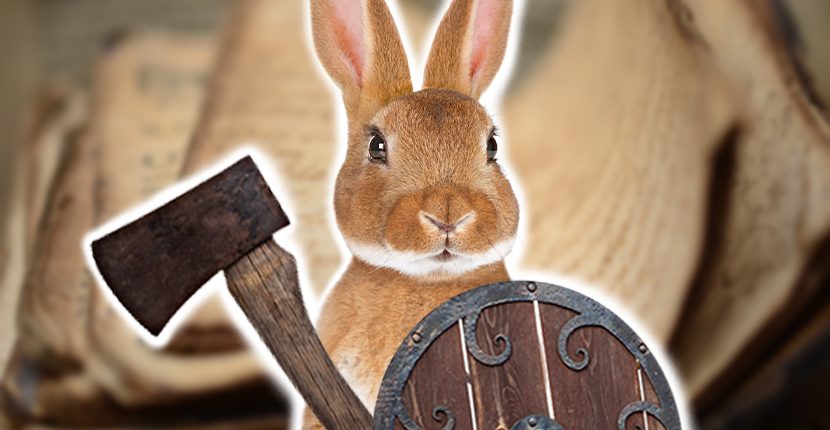For those of us who can appreciate weird and funny drawings, drolleries can’t fail to fascinate. These illustrations, also referred to as grotesques, were used to decorate the margins of illuminated (meaning the text was embellished or illustrated, particularly the initial letters) manuscripts.
This style of art was practiced throughout Middle Ages, but its prime time was from around 1250 through to the 15th century. Drolleries usually depict amusing figures or scenes, including mythical half-man half-beast figures. The creators often portrayed comedic scenes, like the man severing the tree branch upon which he sits, or a barber with a wooden leg. They are considered a prime example of medieval humor.

Very often the doodles compliment the writing, but sometimes they just for stand-alone amusement. Lately, the internet has been flooded with finds people have made when looking through ancient manuscripts. Rabbits feature among the common drollerie characters — but you would be wrong to think these are all cute-and-cuddly bunnies. The furry critters drawn by medieval artists were often killers, and fierce ones at that.
These terminator rabbits were frequently depicted fighting, and defeating, human figures. They come in many different sizes and shapes but are all very weird to look at.
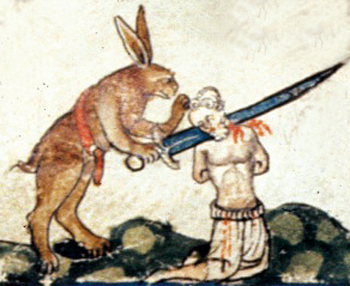
Rabbits were often featured in medieval art and are symbolic of innocence and purity. Likewise, rabbits and hares featured strongly as religious symbols.
One of the primary sources in which to search for the symbolic meanings of creatures, both real and imaginary, is a medieval bestiary, or “Book of Beasts”. The British Library explains that “medieval bestiaries actually reflect the belief that the natural world was designed by God to instruct mankind.”
While the earliest known bestiary is the 2nd century ancient Greek Physiologus, these compendiums of beasts became popular in Europe, particularly in England and France, from the 12th century. They offer an index of both real and mythical animals together with descriptions of “the physical nature and habits of animals in order to elaborate on the moral or spiritual significance of these characteristics,” making them a key to interpreting Western Christian art and literature.
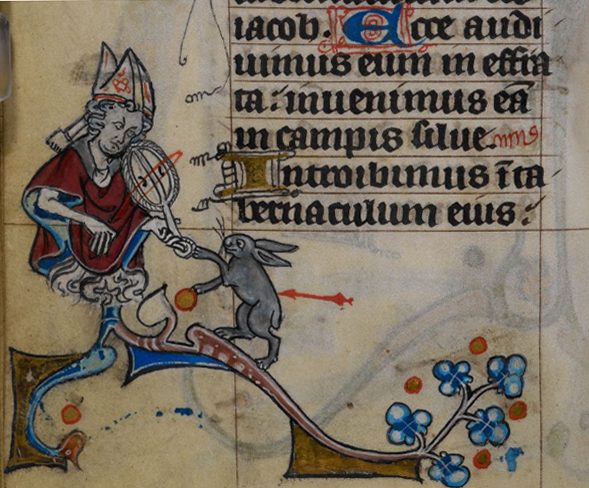
They contained many myths and superstitions and were meant to teach devote Christians about morality and life. Precisely because of their ethical guidelines, they are significant for all of us that want to get a glance at what went on inside medieval minds.
The hare, called by its Latin name lepus, represented a person that has respect for God and puts its trust in His divine powers, rather than trusting its fellow humans. Therefore, medieval manuscripts abound with representations of Jesus surrounded by hares. They are also associated with fertility.
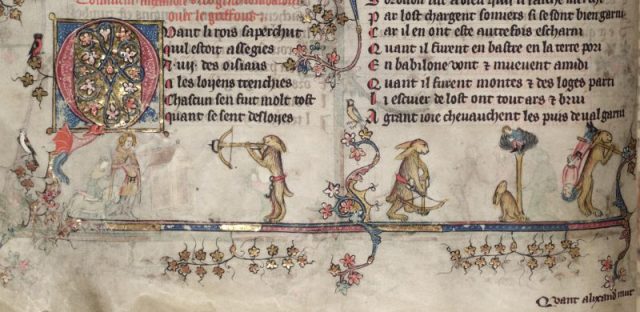
Since rabbits represent helplessness and passivity they are often portrayed as victims of cruel wolves and other stronger animals or humans. However, in the terminator rabbits doodles, they finally get their revenge and their roles are changed. Regrettably for the rabbits, these depictions were customarily used not to grant them their final victory over unfortunate circumstance, but more to make fun of the defeated party.
As hares and rabbits are fairly easy to scare, when they defeat a human they prove that person to be a coward, or maybe not the smartest person ever.
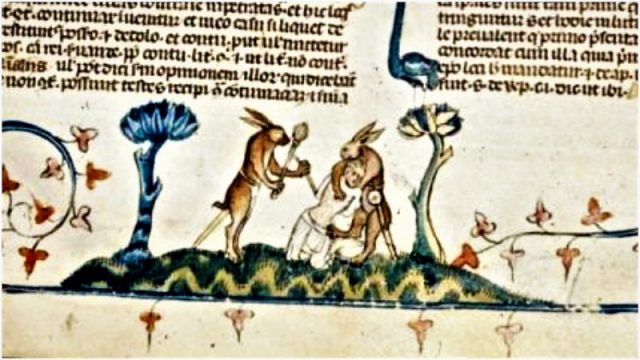
When observing the drollerie depicting furious rabbits one notices many of them representing a hunter that covers his eyes in fear of the cute and miniature animal.
Read another story from us: Why Were Medieval Knights Often Pictured Fighting Giant Snails?
These depictions, therefore, represent a prime example of social commentary and say more about the humans in question than the animal itself. The killer rabbits show us directly that bravery and strength were one of the most admirable character traits a medieval man should adhere to.
